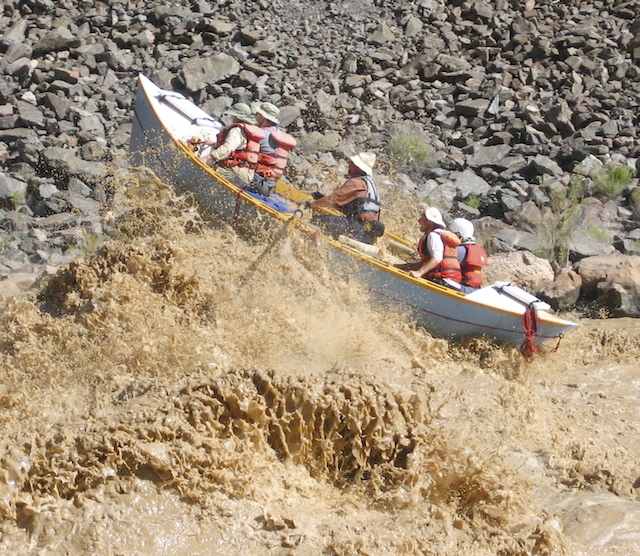
| Route 66 | Cities | Beaches |
 |
Granite Rapids |
Escalante |
Marble Canyon |
Boulder Spring |
| All of the trails leading down from the South Rim are spectacular while you're hiking them, but none of them have quite as exciting a destination as the Hermit Rapids Trail. That's because the sandbar that is the Hermit Rapids Campsite is righr next to the famous Hermit Rapids, one of the most heart stopping white water runs on the trip through the canyon. As you can see from the photo top right and here at right, your tent and fire will be on the same level as the waves. Trips through the canyon use either wooden dories (above right) or modern high tech rafts (shown here), and either one provides a watery roller coaster as its passengers blast through the rapids. The river is at its most violent and muddiest early in the Summer or after heavy rains. As you can see in three photos further down this page, from late June on the river turns a greenish color and calms down a bit, although never below a high adrenalin level. | 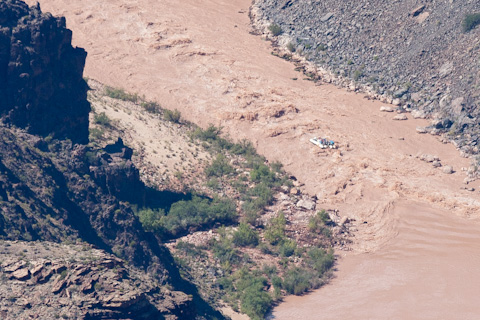 |
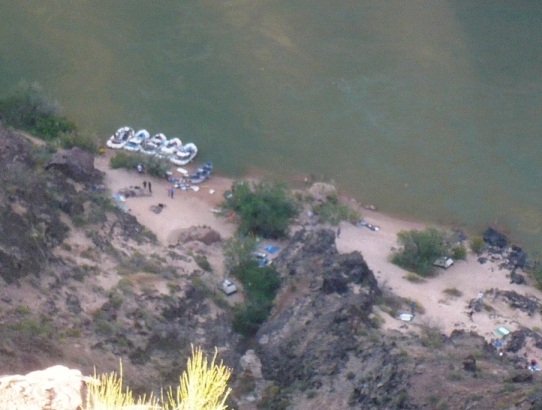 |
The sandbar visible in the photo above and below is used by backpackers. But the sandbar continues downstream and is used by groups rafting and boating the Canyon, who may either stop for a lunch break or for the night. Inevitably, there will be mingling between the groups, and you'll get to hear stories about their adventures coming down the river. Occasionally, someone will be flipped out of their raft or boat and once in a while one of the rafts or boats may totally capsize, and you'll have people swimming and wading ashore and their group pulling over to pick them up. A day or two on the sandbar at Hermit Rapids is never boring. |
During the days it gets hot at Hermit Rapids. July temperatures are over 100. But at night it cools down rapidly and you have a constant breeze as the air flows down out of Hermit Creek Canyon. You'll drift off to sleep to the sound of the rapids. Between rafting groups during the day, you can watch the Ospreys spearing fish, Red Tailed Hawks riding the air currents looking for prey down on the ground, and Ravens lurking around the sandbar hoping they can snag morsels of food or shiny trinkets they can take back to their nests. As the sun goes down, watch for Fox sneaking down to the water for a drink. If you're the only campers on the bar, you may be visited by Desert Bighorn Sheep, but they avoid crowds. After dark, in the moonlight, sit quietly and watch the opposite (North) shore. Mountain Lion often descend the cliffs for a drink. But the real prize is to catch a glimpse of the Ring Tailed Cat, cousin to the Raccoon. A bunch of them live along Lower Hermit Creek and they come down to the river at night to drink, bathe, and fish. They'll definitely see you. Whether you see them is a matter of patience, sharp eyes and luck. |
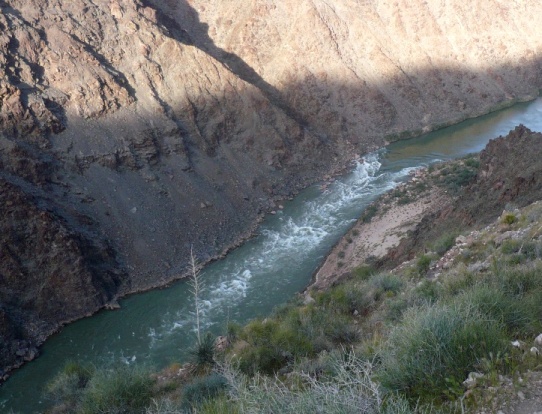 |
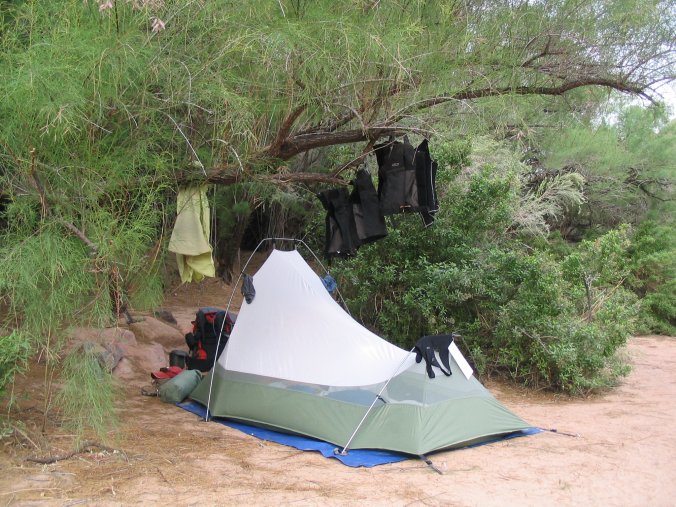 |
You'll be camping on sand. This makes for a soft bed no matter what kind of sleeping pad you're using, but you may want to think about what kind of tent stakes to bring. In other places in the Canyon, you need tough spikes and a sledgehammer to pound them in. Here, you need longer stakes but not as much force. You can dangle your feet in the cold waters of the river to cool off. Along the sandy beach sections, you can even wade in and sit down. But you cannot swim here. The current is very strong and the rapids set up dangerous under currents. People drown in this river. Notice in the photo at left the life jackets hanging from the branch over the tent. Those are just for wading in and sitting down. |
You can also fish here. Just below the rapids the water is highly oxygenated. Trout, bass, catfish and carp are plentiful, but the two trophy fish are the famous Colorado Squawfish and Humpback Chub. The Squawfish is the world's largest minnow, growing to six feet and 100 pounds. They eat other fish plus small game that ventures too close to water's edge. The Humpback is so called because of a prominent ridge above the head to help it maintain position in the fast moving water. |
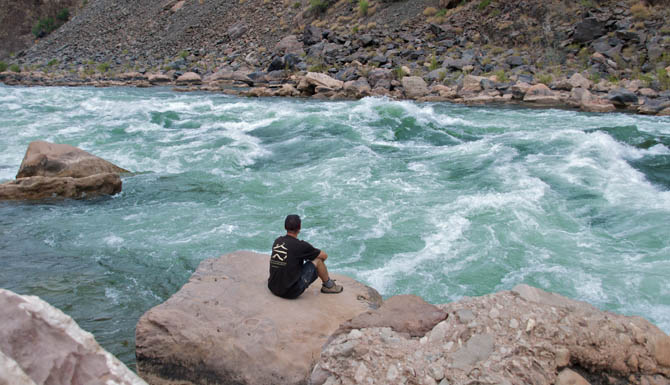 |
 |
Now that we've convinced you Hermit Rapids is a great place to camp for a night or two, it's time to talk about getting there. It's not easy. For the first half of the trip go to our Hiking page and read about the Hermit Trail. Once you reach Hermit Camp, you drop into the Hermit Creek Canyon and follow it 1.5 miles down to the Rapids. It's an incredibly beautiful hike along Hermit Creek, but you have to be careful. You'll be navigating a lot of wet rocks, some of them slippery with moss. You'll cross the stream back and forth, and sometimes walk right in it. Those hiking poles we keep recommending would be a very good idea here. |
| This is the Hermit Creek Narrows. You won't have to walk down in the stream at this point. The actual trail is up on a ledge to the right. After a heavy rain this gorge fills up quickly. Remember if you draw any water from this stream you have to filter it, as with the animals around it contains Giardia Lambdia. |
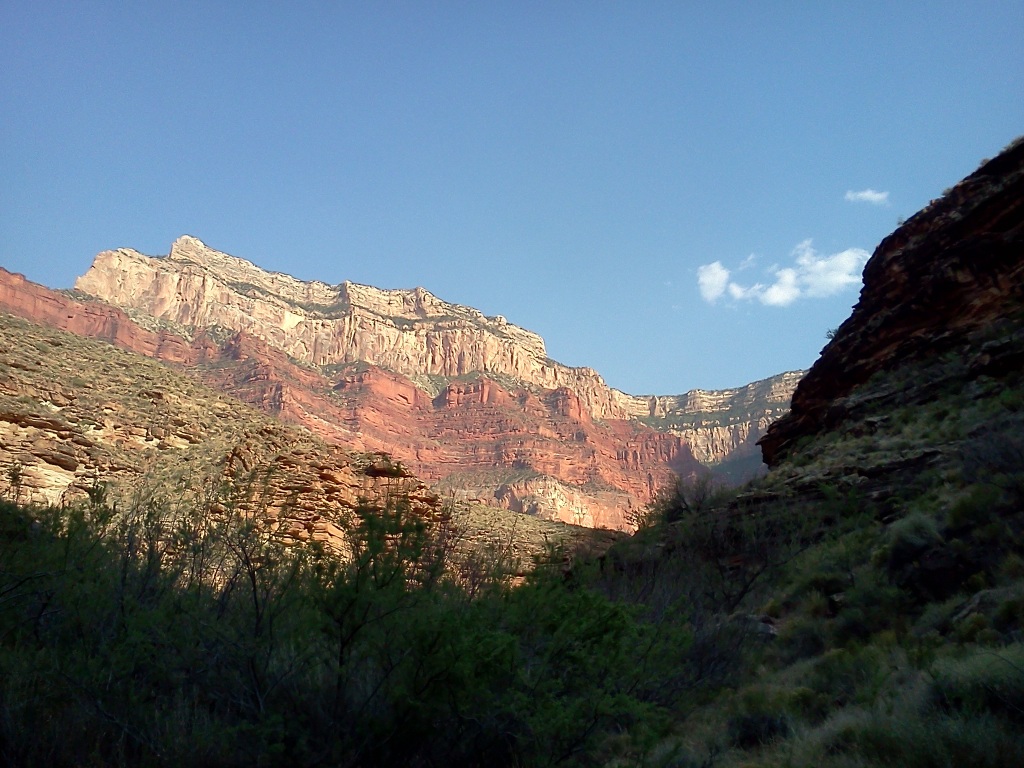 |
Looking back up at the Rim. On the return trip you have to climb 4240 feet in 100 degree heat. You could break the trip in two by camping the first night at Hermit Camp. |
This is Vishnu Schist, the oldest rock in the park. There are no fossils in this rock because it was laid down before life existed on Earth. These rocks are 1.75 billion years old. They were originally composed of sand, mud, silt and volcanic ash. All the other layers later deposited above them compressed down the Vishnu Schist for millions of years to produce the rocks we see here. This is the rock you'll find at the bottom of the Hermit Creek drainage, as it opens out to the river. Backpacking down to Hermit Rapids is thus a trip back in time. Of course, every hike down into the Canyon is a hike back into time, but we think this one is the most dramatic. We also think that of all the Vishnu Schist in the Canyon, this is the best example. |
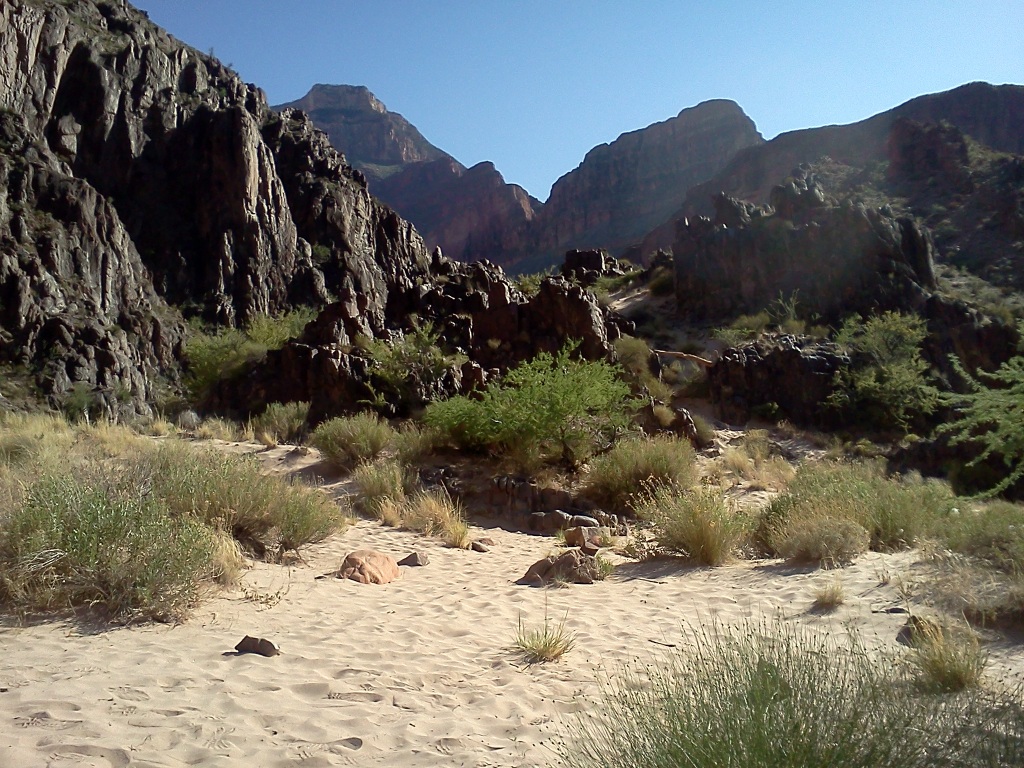 |
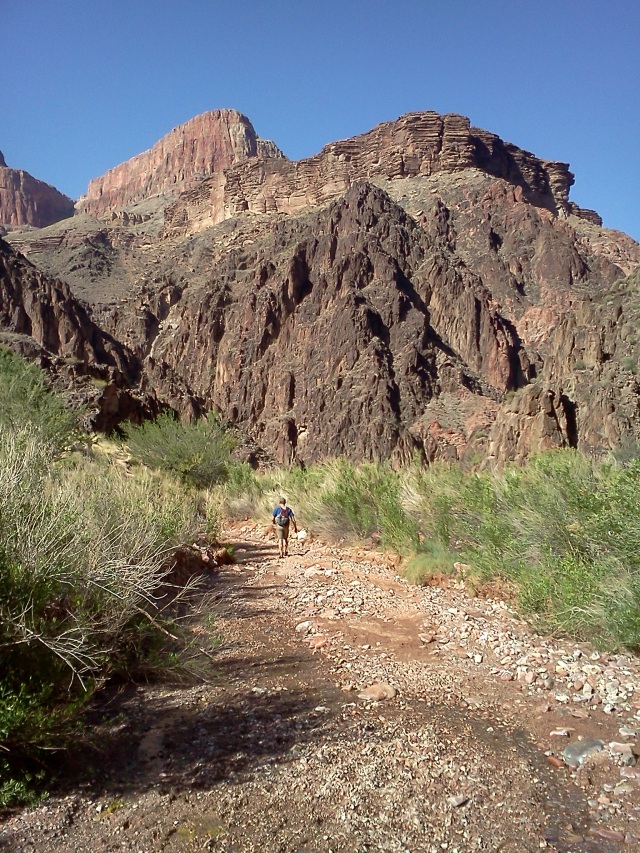 |
Looking back up from the river toward where the trail begins climbing up through the Vishnu Schist toward the Hermit Creek Narrows. The streambed here doubles as the trail. In early Spring there's enough water flowing to force you over to the right, and it makes climbing up the drainage difficult, although you can still do it. We much prefer the drier Summer weather. We'll tolerate more heat for the dry trailbed. Because of the rugged uphill climb, it usually takes two hours to climb from Hermit Rapids up the 1.5 miles to Hermit Camp. |
|
|||
|